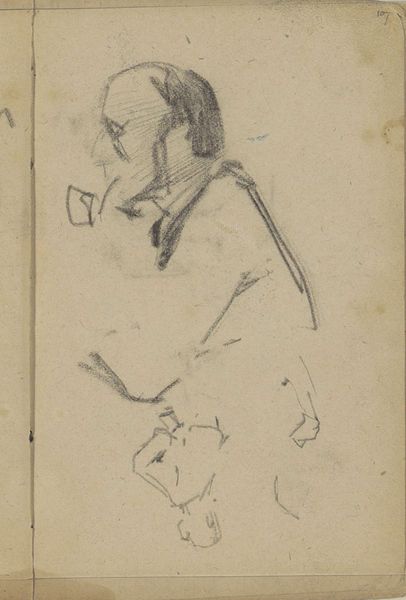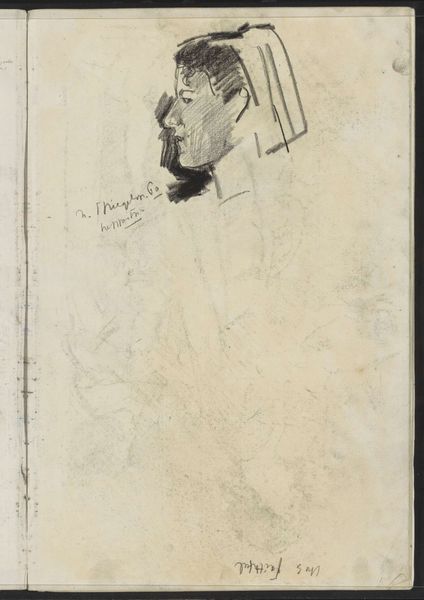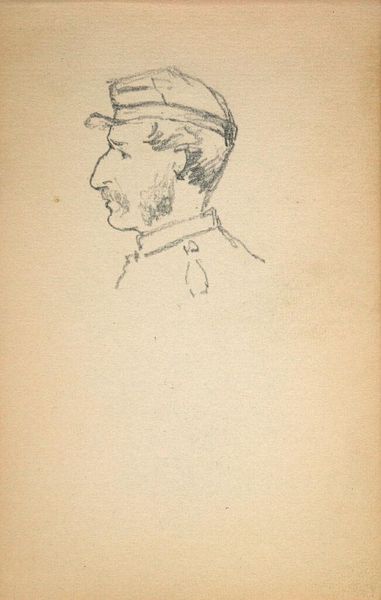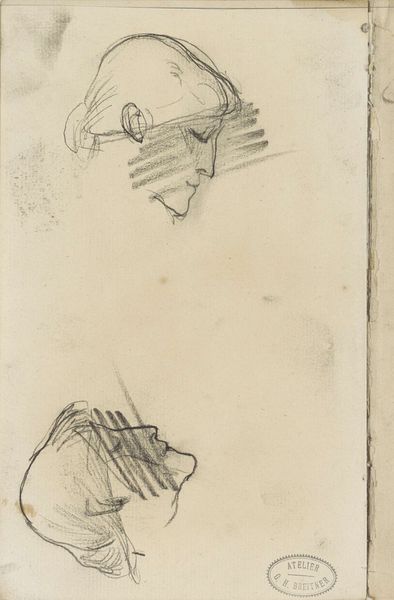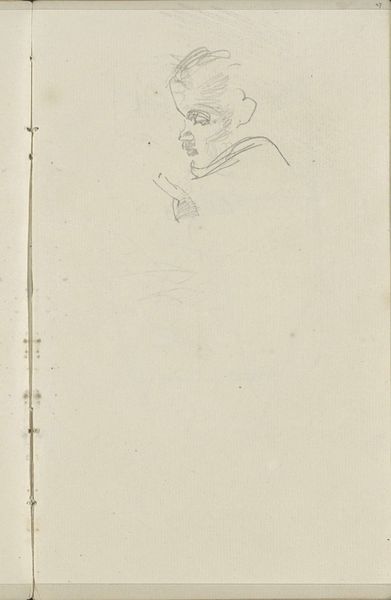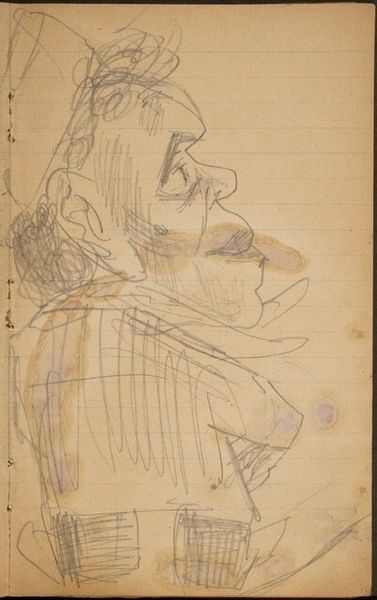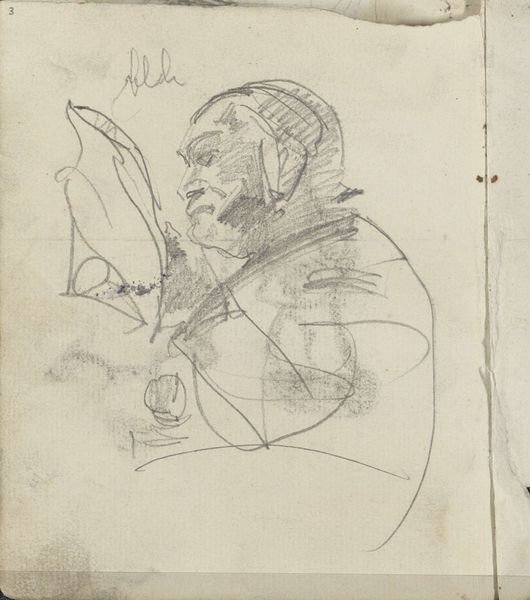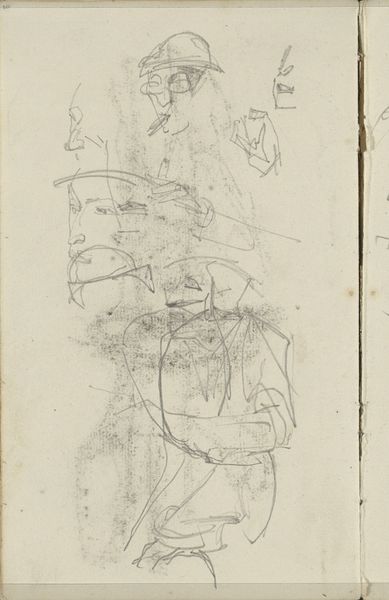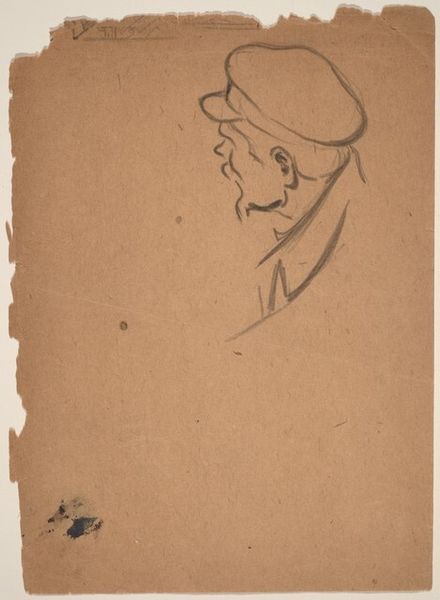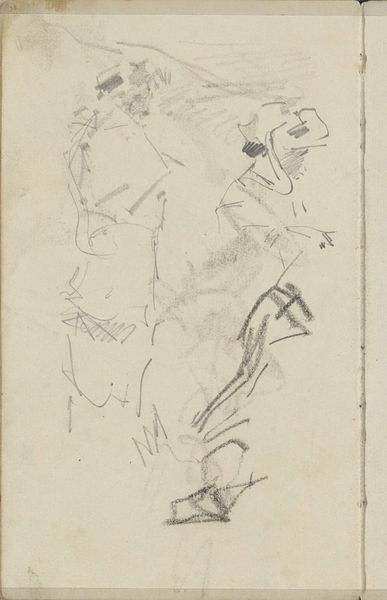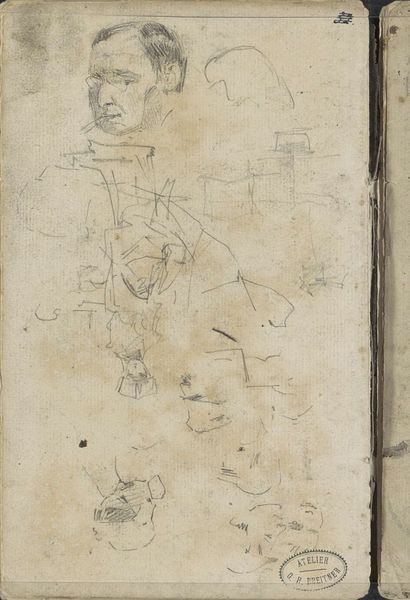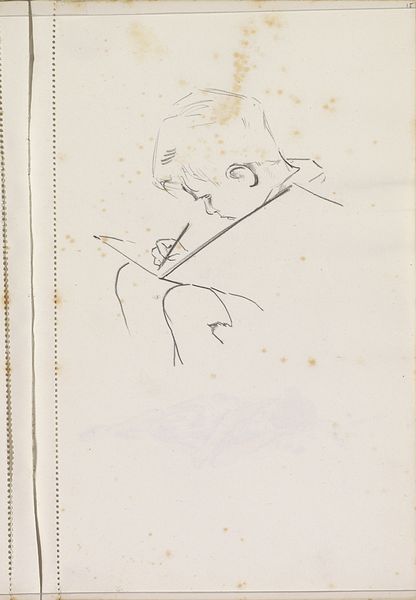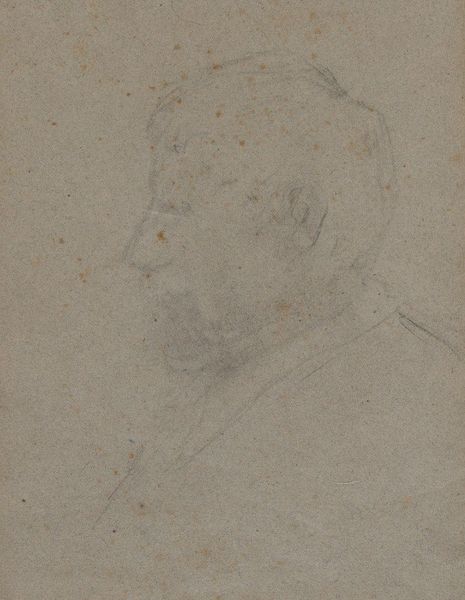
drawing, pencil, graphite
#
portrait
#
drawing
#
amateur sketch
#
toned paper
#
light pencil work
#
incomplete sketchy
#
personal sketchbook
#
character sketch
#
detailed observational sketch
#
pencil
#
graphite
#
sketchbook drawing
#
quick sketch
#
sketchbook art
#
profile
#
realism
Dimensions: height 197 mm, width 124 mm
Copyright: Rijks Museum: Open Domain
Curator: There's a starkness to this piece, almost vulnerable. What strikes you about it? Editor: Stark indeed! To me, it feels immediate, a sketch quickly rendered on toned paper, perhaps in graphite. The pencil lines are light, suggestive. Curator: This drawing, titled "Buste van een man met hoed," or "Bust of a Man with Hat" in English, is by George Hendrik Breitner, dating from around 1895 to 1898. You can currently find it here at the Rijksmuseum. Breitner, known for his paintings of Amsterdam street life, was also a prolific draftsman. This drawing gives insight into his process. Editor: I find myself wondering about that process. The lines are economical, but they describe the subject's essential forms effectively. Notice the hat. It is a simple shape, but its angle and position suggest the tilt of the head and, arguably, a particular attitude. Curator: Absolutely, it feels like a very personal study, almost like a character sketch one might find tucked away in a sketchbook. It isn't striving for polished perfection, but rather capturing a fleeting impression. Breitner's work overall moves away from academic painting toward a more "realistic" representation of his time. Editor: That makes me think about the paper itself as a material. Is it drawing paper meant for such sketches, or whatever surface happened to be on hand? Its texture would certainly impact how the pencil interacts, almost as an equal collaborator here, rather than passive support. Also, one might also wonder about the availability of such material: was toned paper becoming fashionable as an aesthetic choice? Curator: That is a very pertinent question! Breitner, of course, was moving in circles with very clear views on such topics. In those circles, realism was definitely favoured for the topics he picked, as much as his process in producing sketches like these, where speed was of essence, a feature that can easily be noted as his signature touch, making this simple sketch very much connected to the broader society and culture that sustained it. Editor: Yes, and those sketchbooks, once intensely personal, eventually finding their way into the public domain, raise other questions about value, intent, and the evolving perception of the “incomplete.” Fascinating. Curator: Indeed, it allows us a glimpse into Breitner's creative process beyond the finished paintings he exhibited. Editor: I leave with a greater understanding of how sketches like these enrich my perception and appreciation for not just art but also artistry, particularly regarding making.
Comments
No comments
Be the first to comment and join the conversation on the ultimate creative platform.
